GUILLIAN BARRE SYNDROME SYMPTOMS
03:28 Nov 17 2013
Times Read: 1,558
MY SON HAD THIS WHEN HE WAS 7 YRS OLD.
HE WAS LUCKY TO RECOVER.
Guillain–Barré syndrome
From Wikipedia, the free encyclopedia
Guillain–Barré syndrome
Classification and external resources
ICD-10 G61.0
ICD-9 357.0
OMIM 139393
DiseasesDB 5465
MedlinePlus 000684
eMedicine emerg/222 neuro/7 pmr/48 neuro/598
MeSH D020275
Guillain–Barré syndrome (GBS) (French pronunciation: [ɡiˈlɛ̃ baˈʁe], English pronunciation: /ˈɡiːlænˈbɑreɪ/), sometimes Landry's paralysis or Guillain–Barré–Strohl syndrome, is an acute polyneuropathy, a disorder affecting the peripheral nervous system. Ascending paralysis, weakness beginning in the feet and hands and migrating towards the trunk, is the most typical symptom, and some subtypes cause change in sensation or pain, as well as dysfunction of the autonomic nervous system. It can cause life-threatening complications, in particular if the respiratory muscles are affected or if the autonomic nervous system is involved. The disease is usually triggered by an infection.
The diagnosis is usually made by nerve conduction studies and with studies of the cerebrospinal fluid. With prompt treatment by intravenous immunoglobulins or plasmapheresis, together with supportive care, the majority will recover completely. Guillain–Barré syndrome is rare, at one to two cases per 100,000 people annually, but is the most common cause of acute non-trauma-related paralysis. The syndrome is named after the French physicians Georges Guillain and Jean Alexandre Barré, who described it in 1916.
Contents [hide]
1 Classification
2 Signs and symptoms
3 Cause
4 Diagnosis
4.1 Testing
4.2 Criteria
5 Treatment
6 Prognosis
7 Epidemiology
8 History
9 Notable cases
10 References
11 Literature
12 External links
Classification[edit]
Six different subtypes of Guillain–Barré syndrome exist:[citation needed]
Acute inflammatory demyelinating polyneuropathy (AIDP) is the most common form of GBS, and the term is often used synonymously with GBS. It is caused by an autoimmune response directed against Schwann cell membranes.
Miller Fisher syndrome (MFS) is a rare variant of GBS. Accounting for about 5% of GBS cases, it manifests as a descending paralysis, proceeding in the reverse order of the more common form of GBS.[1] It usually affects the eye muscles first and presents with the triad of ophthalmoplegia, ataxia, and areflexia.[2] The ataxia predominantly affects the gait and trunk, with the limbs relatively spared. Anti-GQ1b antibodies are present in 90% of cases.
Acute motor axonal neuropathy (AMAN),[3] also known as Chinese paralytic syndrome, attacks motor nodes of Ranvier and is prevalent in China and Mexico. It is probably due to an auto-immune response directed against the axoplasm of peripheral nerves. The disease may be seasonal and recovery can be rapid. Anti-GD1a antibodies[4] are present. Anti-GD3 antibodies are found more frequently in AMAN.
Acute motor sensory axonal neuropathy (AMSAN) is similar to AMAN, but also affects sensory nerves with severe axonal damage. Like AMAN, it is probably due to an autoimmune response directed against the axoplasm of peripheral nerves. Recovery is slow and often incomplete.[5]
Acute panautonomic neuropathy is the most rare variant of GBS, sometimes accompanied by encephalopathy. It is associated with a high mortality rate, owing to cardiovascular involvement, and associated dysrhythmias. Frequently occurring symptoms include impaired sweating, lack of tear formation, photophobia, dryness of nasal and oral mucosa, itching and peeling of skin, nausea, dysphagia, and constipation unrelieved by laxatives or alternating with diarrhea. Initial nonspecific symptoms of lethargy, fatigue, headache, and decreased initiative are followed by autonomic symptoms including orthostatic lightheadedness, blurring of vision, abdominal pain, diarrhea, dryness of eyes, and disturbed micturition. The most common symptoms at onset are related to orthostatic intolerance, as well as gastrointestinal and sudomotor dysfunction.[6] Parasympathetic impairment (abdominal pain, vomiting, constipation, ileus, urinary retention, dilated unreactive pupils; loss of accommodation) may also be observed.
Bickerstaff's brainstem encephalitis (BBE), a further variant of Guillain–Barré syndrome, is characterized by acute onset of ophthalmoplegia, ataxia, disturbance of consciousness, hyperreflexia or Babinski's sign. The course of the disease can be monophasic or remitting-relapsing. Large, irregular hyperintense lesions located mainly in the brainstem, especially in the pons, midbrain and medulla, are described in the literature. Despite severe initial presentation, BBE usually has a good prognosis. Magnetic resonance imaging plays a critical role in the diagnosis of BBE. A considerable number of BBE patients have associated axonal Guillain–Barré syndrome, indicative that the two disorders are closely related and form a continuous spectrum.
Signs and symptoms[edit]
The disorder is characterized by symmetrical weakness that usually affects the lower limbs first, and rapidly progresses in an ascending fashion. Patients generally notice weakness in their legs, manifesting as "rubbery legs" or legs that tend to buckle, with or without dysesthesias (numbness or tingling). As the weakness progresses upward, usually over periods of hours to days, the arms and facial muscles also become affected. Frequently, the lower cranial nerves may be affected, leading to bulbar weakness, oropharyngeal dysphagia (drooling, or difficulty swallowing and/or maintaining an open airway) and respiratory difficulties. Most patients require hospitalization and about 30% require ventilatory assistance for treatment of type II respiratory failure.[7] Facial weakness is also common. Eye movement abnormalities are not commonly seen in ascending GBS, but are a prominent feature in the Miller-Fisher variant.
Sensory loss, if present, usually takes the form of loss of proprioception (position sense) and areflexia (complete loss of deep tendon reflexes), an important feature of GBS. Loss of pain and temperature sensation is usually mild. In fact, pain is a common symptom in GBS, presenting as deep aching pain, usually in the weakened muscles, which patients compare to the pain from overexercising. These pains are self-limited and may be treated with standard analgesics. Bladder dysfunction may occur in severe cases, but is usually short-lived.
In severe cases of GBS, loss of autonomic function is common, manifesting as wide fluctuations in blood pressure, orthostatic hypotension (a fall in blood pressure on standing, leading to an increased risk of collapse), and cardiac arrhythmias.
Acute paralysis in Guillain–Barré syndrome may be related to sodium channel blocking factor in the cerebrospinal fluid. Significant issues involving intravenous salt and water administration may occur unpredictably in this patient group, resulting in SIADH, a cause of low sodium levels in the blood.
Cause[edit]
Structure of a typical neuron
Neuron
At one end of an elongated structure is a branching mass. At the centre of this mass is the nucleus and the branches are dendrites. A thick axon trails away from the mass, ending with further branching which are labeled as axon terminals. Along the axon are a number of protuberances labeled as myelin sheaths. Dendrite Soma Axon Nucleus Node of
Ranvier Axon terminal Schwann cell Myelin sheath
All forms of Guillain–Barré syndrome are autoimmune diseases, due to an immune response to foreign antigens (such as infectious agents) that mistargets host nerve tissues unintentionally through a mechanism known as molecular mimicry.[8] The targets of such immune attack are thought to be gangliosides, compounds naturally present in large quantities in human peripheral nerve tissues. The most well-described antecedent infection is the bacterium Campylobacter jejuni,[9][10] In addition, cytomegalovirus has a known association with GBS.[11] In many cases, identification of a specific cause is impossible. Some cases may be triggered by the influenza virus, or by an immune reaction to the influenza virus.[12] An increased incidence of Guillain–Barré syndrome followed influenza immunization during the 1976-1977 swine flu pandemic;[13] however, epidemiological studies since then have demonstrated either an extremely small increased risk following immunization (under one additional case per million vaccinations) or no increased risk.[14][15]
The end result of this autoimmune process is an attack on the peripheral nerves and damage to myelin, the fatty insulating layer of the nerve, and a nerve-conduction block leading to muscle paralysis that may be accompanied by sensory or autonomic disturbances.
In mild cases, nerve axon (the long slender conducting portion of a nerve) function remains intact and recovery can be rapid if remyelination occurs. In severe cases, axonal damage occurs, and recovery depends on the regeneration of this important tissue. About 80% of patients have myelin loss; in the remaining 20%, the pathological hallmark is axon loss.
Guillain–Barré, unlike disorders such as multiple sclerosis (MS) and Lou Gehrig's disease (ALS), is a purely peripheral nerve disorder and does not in general cause nerve damage to the brain or spinal cord.
Diagnosis[edit]
The diagnosis of GBS depends on findings such as rapid development of muscle paralysis, areflexia, absence of fever, and a likely inciting event. Cerebrospinal fluid analysis (through a lumbar spinal puncture) and electrodiagnostic tests of nerves and muscles (such as nerve conduction studies) are common tests ordered in the diagnosis of GBS.
Testing[edit]
In cerebrospinal fluid (CSF), characteristic findings include albumino-cytological dissociation. As opposed to infectious causes, this is an elevated protein level (100–1000 mg/dl), without an accompanying increased cell count (absence of pleocytosis). A sustained increased white blood cell count may indicate an alternative diagnosis such as infection.
Electromyography (EMG) and nerve conduction studies may show prolonged distal latencies, conduction slowing, conduction block, and temporal dispersion of compound action potential in demyelinating cases. F waves and H-reflexes may be prolonged or absent. Needle EMG is frequently normal in acute cases. Reduced, neuropathic recruitment in weak muscles can be seen. Fibrillations will be seen on needle EMG if some axonal injury occurs after three to four weeks. In primary axonal damage, the findings include reduced amplitude of the action potentials without conduction slowing.
Criteria[edit]
Features required for diagnosis are progressive weakness in legs and often arms, and areflexia (the absence of deep tendon reflexes).[16][17]
Features that strongly support diagnosis are progression of symptoms over days to four weeks, relative symmetry of symptoms, mild sensory symptoms or signs, cranial nerve involvement (especially bilateral weakness of facial muscles), autonomic dysfunction, pain (often present), high concentration of protein in CSF, and typical electrodiagnostic features.[16][17]
Features that should raise doubt about the diagnosis include severe pulmonary dysfunction with limited limb weakness at onset, severe sensory signs with limited weakness at onset, bladder or bowel dysfunction at onset, fever at onset, sharp sensory level, slow progression with limited weakness without respiratory involvement (subacute inflammatory demyelinating polyneuropathy or CIDP is more likely), marked persistent asymmetry of weakness, persistent bladder or bowel dysfunction, increased number of mononuclear cells in CSF (>50×106/L), and polymorphonuclear cells in CSF.[16][17]
Treatment[edit]
Supportive care is the cornerstone of successful management in the acute patient. Of greatest concern is respiratory failure due to paralysis of the diaphragm, the muscle most important for breathing. Intubation may be needed when evidence of impending failure of the muscles of breathing is present – when the vital capacity (VC) is less than 20 ml/kg, the negative inspiratory force (NIF) is less negative (i.e., closer to zero) than −25 cmH2O, more than 30% decrease in either VC or NIF within 24 hours, rapid progression of disorder, or autonomic instability.
Subsequent treatment consists of attempting to reduce the body's attack on the nervous system, either by plasmapheresis, filtering antibodies out of the blood stream, or by administering intravenous immunoglobulins (IVIg), to neutralize harmful antibodies and inflammation causing disease. These two treatments are equally effective and a combination of the two is not significantly better than either alone. Glucocorticoids have not been found to be effective in GBS.[18][19] Treatment is usually begun as soon as the diagnosis is made. Plasmapheresis hastens recovery when used within four weeks of the onset of symptoms.[19] IVIg has equivalent efficacy to plasmapheresis when started within two weeks of the onset of symptoms, and has fewer complications.[19] IVIg is usually used first because of its ease of administration and safety profile. Its use is not without risk; occasionally it causes hepatitis, or in rare cases, renal failure if used for longer than five days.
Following the acute phase, treatment often consists of rehabilitation with the help of a multidisciplinary team to focus on improving activities of daily living (ADLs). Occupational therapists may offer equipment (such as wheelchair and special cutlery) to help the patient achieve ADL independence. Physiotherapists assist to correct functional movement, avoiding harmful compensations that might have a negative effect in the long run. Also, some evidence supports physiotherapy in helping patients with Guillain–Barré syndrome to regain strength, endurance, and gait quality,[20] as well as helping them prevent contractures, bedsores, and cardiopulmonary difficulties.[21] Speech and language therapists help regain speaking and swallowing abilities, especially if the patient was intubated or received a tracheostomy.
Prognosis[edit]
Recovery usually starts after the fourth week from the onset of the disorder[citation needed]. About 80% of patients have a complete recovery within a few months to a year, although minor findings may persist, such as areflexia. About 5–10% recover with severe disability, with most of such cases involving severe proximal motor and sensory axonal damage with inability of axonal regeneration. Despite all improvements in treatment and supportive care, the death rate is still about 2–3%, even in the best intensive care units. Worldwide, the death rate runs slightly higher (4%), mostly from a lack of availability of life-support equipment during the lengthy plateau lasting four to six weeks, and in some cases up to one year, when a ventilator is needed in the worst cases. About 5–10% of patients have one or more late relapses, in which case they are then classified as having chronic inflammatory demyelinating polyneuropathy.
Poor prognostic factors include age over 40 years, history of preceding diarrheal illness, requiring ventilator support, high anti-GM1 titre, and poor upper-limb muscle strength.
Epidemiology[edit]
Worldwide, the annual incidence is about 0.6–4.0 occurrences per 100,000 people. Men are one and a half times more likely to be affected than women. The incidence increases with age; about one case per 100,000 occurs in people aged below 30 years and about four cases per 100,000 in those older than 75 years.[22] The incidence of GBS during pregnancy is 1.7 cases per 100,000 of the population.[23] Congenital and neonatal Guillain–Barré syndrome have also been reported.[24]
History[edit]
French physician Jean Landry first described the disorder in 1859. In 1916, Georges Guillain, Jean Alexandre Barré, and André Strohl diagnosed two soldiers with the illness and described the key diagnostic abnormality of increased spinal-fluid protein production, but normal cell count.[25]
GBS is also known as acute idiopathic polyradiculoneuritis, acute idiopathic polyneuritis, French polio, Landry's ascending paralysis and Landry–Guillain–Barré syndrome.
THE RAVEN WRITTEN BY EDGAR ALLEN POE
06:59 Nov 03 2013
Times Read: 1,622
Once upon a midnight dreary, while I pondered, weak and weary, Over many a quaint and curious volume of forgotten lore— While I nodded, nearly napping, suddenly there came a tapping, As of some one gently rapping, rapping at my chamber door— "'Tis some visitor," I muttered, "tapping at my chamber door— Only this and nothing more." Ah, distinctly I remember it was in the bleak December; And each separate dying ember wrought its ghost upon the floor. Eagerly I wished the morrow;—vainly I had sought to borrow From my books surcease of sorrow—sorrow for the lost Lenore— For the rare and radiant maiden whom the angels name Lenore— Nameless here for evermore. And the silken, sad, uncertain rustling of each purple curtain Thrilled me—filled me with fantastic terrors never felt before; So that now, to still the beating of my heart, I stood repeating, "'Tis some visitor entreating entrance at my chamber door— Some late visitor entreating entrance at my chamber door;— This it is and nothing more." Presently my soul grew stronger; hesitating then no longer, "Sir," said I, "or Madam, truly your forgiveness I implore; But the fact is I was napping, and so gently you came rapping, And so faintly you came tapping, tapping at my chamber door, That I scarce was sure I heard you"—here I opened wide the door;— Darkness there and nothing more. Deep into that darkness peering, long I stood there wondering, fearing, Doubting, dreaming dreams no mortal ever dared to dream before; But the silence was unbroken, and the stillness gave no token, And the only word there spoken was the whispered word, "Lenore?" This I whispered, and an echo murmured back the word, "Lenore!"— Merely this and nothing more. Back into the chamber turning, all my soul within me burning, Soon again I heard a tapping somewhat louder than before. "Surely," said I, "surely that is something at my window lattice; Let me see, then, what thereat is, and this mystery explore— Let my heart be still a moment and this mystery explore;— 'Tis the wind and nothing more!" Open here I flung the shutter, when, with many a flirt and flutter, In there stepped a stately Raven of the saintly days of yore; Not the least obeisance made he; not a minute stopped or stayed he; But, with mien of lord or lady, perched above my chamber door— Perched upon a bust of Pallas just above my chamber door— Perched, and sat, and nothing more. Then this ebony bird beguiling my sad fancy into smiling, By the grave and stern decorum of the countenance it wore, "Though thy crest be shorn and shaven, thou," I said, "art sure no craven, Ghastly grim and ancient Raven wandering from the Nightly shore— Tell me what thy lordly name is on the Night's Plutonian shore!" Quoth the Raven "Nevermore." Much I marvelled this ungainly fowl to hear discourse so plainly, Though its answer little meaning—little relevancy bore; For we cannot help agreeing that no living human being Ever yet was blest with seeing bird above his chamber door— Bird or beast upon the sculptured bust above his chamber door, With such name as "Nevermore." But the Raven, sitting lonely on the placid bust, spoke only That one word, as if his soul in that one word he did outpour. Nothing further then he uttered—not a feather then he fluttered— Till I scarcely more than muttered "Other friends have flown before— On the morrow he will leave me, as my hopes have flown before." Then the bird said "Nevermore." Startled at the stillness broken by reply so aptly spoken, "Doubtless," said I, "what it utters is its only stock and store Caught from some unhappy master whom unmerciful Disaster Followed fast and followed faster till his songs one burden bore— Till the dirges of his Hope that melancholy burden bore Of 'Never—nevermore.'" But the Raven still beguiling my sad fancy into smiling, Straight I wheeled a cushioned seat in front of bird, and bust and door; Then, upon the velvet sinking, I betook myself to linking Fancy unto fancy, thinking what this ominous bird of yore— What this grim, ungainly, ghastly, gaunt and ominous bird of yore Meant in croaking "Nevermore." This I sat engaged in guessing, but no syllable expressing To the fowl whose fiery eyes now burned into my bosom's core; This and more I sat divining, with my head at ease reclining On the cushion's velvet lining that the lamp-light gloated o'er, But whose velvet violet lining with the lamp-light gloating o'er, She shall press, ah, nevermore! Then, methought, the air grew denser, perfumed from an unseen censer Swung by Seraphim whose foot-falls tinkled on the tufted floor. "Wretch," I cried, "thy God hath lent thee—by these angels he hath sent thee Respite—respite and nepenthe, from thy memories of Lenore; Quaff, oh quaff this kind nepenthe and forget this lost Lenore!" Quoth the Raven "Nevermore." "Prophet!" said I, "thing of evil!—prophet still, if bird or devil!— Whether Tempter sent, or whether tempest tossed thee here ashore, Desolate yet all undaunted, on this desert land enchanted— On this home by Horror haunted—tell me truly, I implore— Is there—is there balm in Gilead?—tell me—tell me, I implore!" Quoth the Raven "Nevermore." "Prophet!" said I, "thing of evil—prophet still, if bird or devil! By that Heaven that bends above us—by that God we both adore— Tell this soul with sorrow laden if, within the distant Aidenn, It shall clasp a sainted maiden whom the angels name Lenore— Clasp a rare and radiant maiden whom the angels name Lenore." Quoth the Raven "Nevermore." "Be that word our sign in parting, bird or fiend!" I shrieked, upstarting— "Get thee back into the tempest and the Night's Plutonian shore! Leave no black plume as a token of that lie thy soul hath spoken! Leave my loneliness unbroken!—quit the bust above my door! Take thy beak from out my heart, and take thy form from off my door!" Quoth the Raven "Nevermore." And the Raven, never flitting, still is sitting, still is sitting On the pallid bust of Pallas just above my chamber door; And his eyes have all the seeming of a demon's that is dreaming, And the lamp-light o'er him streaming throws his shadow on the floor; And my soul from out that shadow that lies floating on the floor Shall be lifted—nevermore! -
See more at: http://www.poets.org/viewmedia.php/prmMID/15638#sthash.VnvudNTE.dpuf



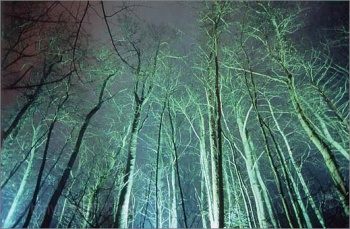



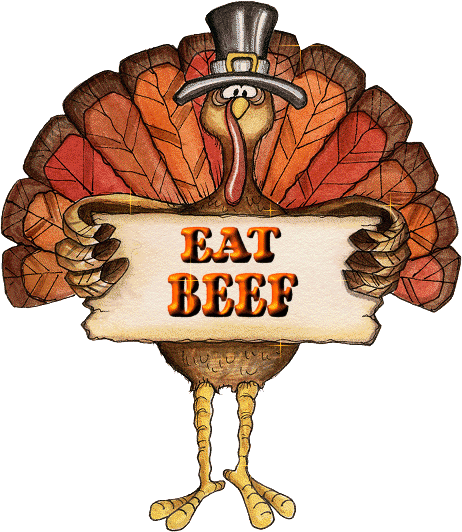













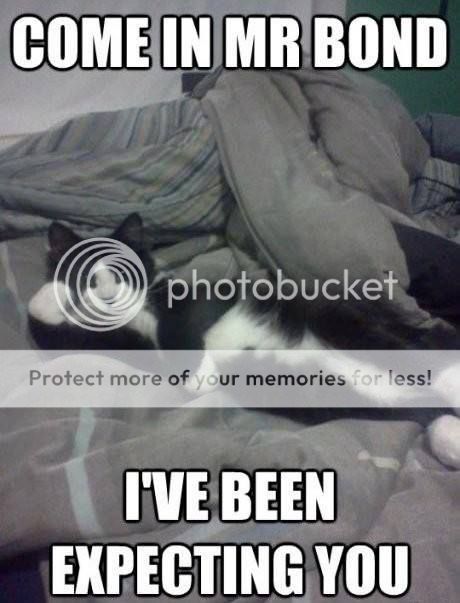


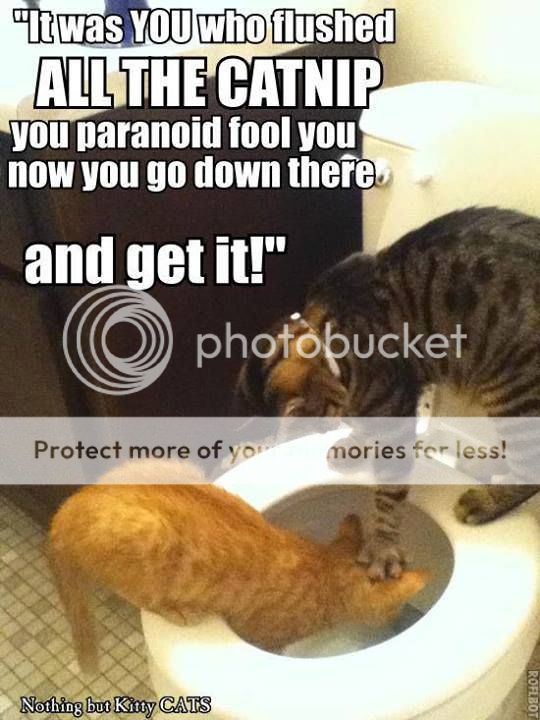



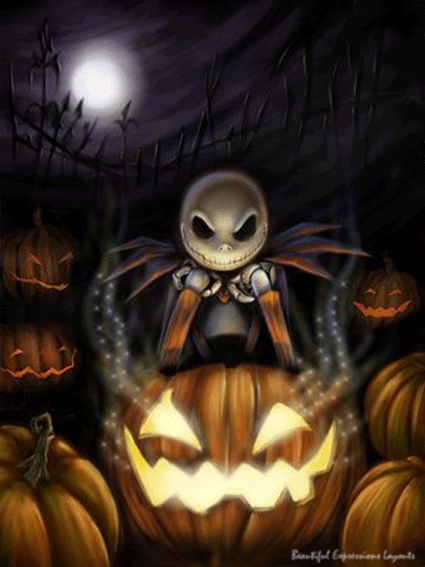







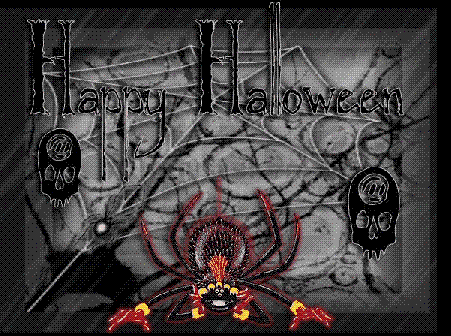



COMMENTS
-